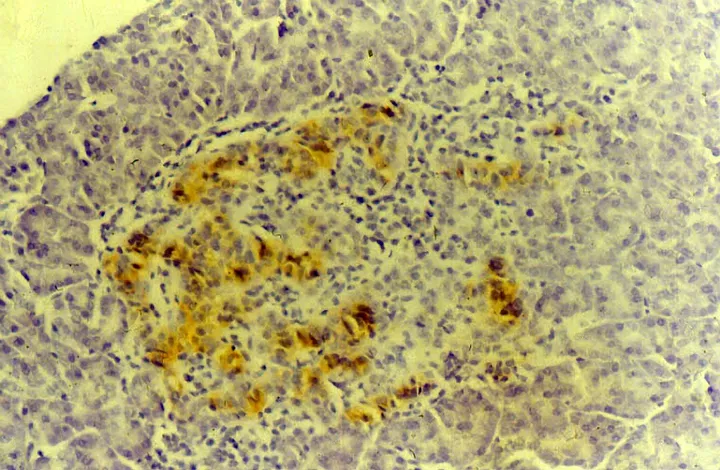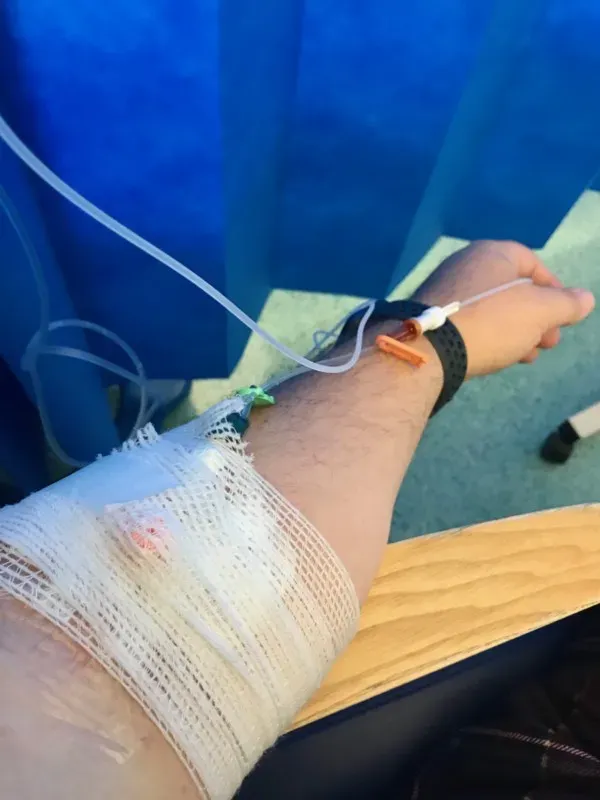One year on…
This post was originally written and published, on medium on Jul 9, 2020
 Banyan tree (Ficus benghalensis) growing on a lakeside. Coloured etching by B. Pouncy, c. 1793, after W. Hodges. Credit: Wellcome Collection. Attribution 4.0 International (CC BY 4.0)
Banyan tree (Ficus benghalensis) growing on a lakeside. Coloured etching by B. Pouncy, c. 1793, after W. Hodges. Credit: Wellcome Collection. Attribution 4.0 International (CC BY 4.0)
I am 47 years old. It is Friday the 20th September 2019. I should be at work; I should be looking forward to going out for dinner with friends but I’m in Kingston Hospital’s A&E.
My body isn’t working properly, the pH of my blood is falling, becoming more acidic. I’m scared both by what I know and what I think I know. Thankfully I’m not alone: my sister is with me; my wife is on her way back from London.
I have been feeling ill for the last couple of weeks but I have put it down to a post viral fatigue and tried to carry on. Now I’m in Diabetic Ketoacidosis (DKA), my blood sugar is dangerously high but my body is starving — I’ve lost 15kg of weight in two weeks — and to try and cope with that my body is breaking down fat and muscle, releasing ketones in the process. It is those ketones that are acidifying my blood. I’m diabetic. My pancreas has stopped making insulin.
At the end of August, I went camping with my friends and family, the weather was lovely and we all spent a lot of the weekend swimming in the river that flowed at the end of the campsite. Possibly because the water levels were low and the river was sluggish, perhaps because the river flowed through a field of cattle, perhaps it had nothing to do with the river but in the week that followed lots of us who went on the trip came down with a stomach bug. I spent the weekend in bed feeling like I had come down with the flu following a bout of vomiting.
By the Monday I was feeling better but not well. I was lethargic, I was losing weight and had a horrible, horrible taste in my mouth, and I was pissing gallons a day.
I should have realised that something was seriously wrong; that my immune system, perhaps because of that earlier infection, perhaps not, had turned on me and had decided that it was those specialist cells nestled in my pancreas that it wanted to destroy. I didn’t.
I should have realised I had developed diabetes; I knew the signs. But perhaps because I didn’t think of that foul taste as thirst, because it wasn’t like any thirst I had ever experienced before. Water made no difference, only ice cream, orange juice and chilli offered some relief.
I was tired. I slept in the day on the sofa, on the train into work. Slowly my body was being siphoned out of me.
After a second weekend of sleeping and feeling unwell, I went to see my GP.
 Destruction of islets of Langerhans in Type I diabetes. Credit: Anne Clark, University of Oxford. Attribution 4.0 International (CC BY 4.0) s
Destruction of islets of Langerhans in Type I diabetes. Credit: Anne Clark, University of Oxford. Attribution 4.0 International (CC BY 4.0) s
Until 1922 Type 1 Diabetes was a death sentence. The reason is simple enough, insulin controls the absorption of glucose into your cells. Type 1 diabetics don’t make insulin, our immune system attacks and destroys the cells responsible for making insulin. And without insulin glucose builds up in your blood. Your kidneys can’t absorb that much glucose (anything over 10 mmol/L). You piss it out. All that sugar increases the osmotic pressure of the urine making it harder for your kidneys to reabsorb water. You develop a “fatal thirst”.
I was losing weight, in part, because I couldn’t retain enough water. But I was also wasting away because although my cells were swimming in sugar, without insulin, it was beyond their reach and so my body started to consume itself starting with fat and then muscle.
From here on in, if untreated, things could have gone bad, and then I would have died. If I had managed to hold on, without insulin, I could have looked forward to going blind, my organs failing, and sores that wouldn’t heal, sores which would have escalated to amputations. Before 1922, this is what happened and if you can’t get hold of insulin this is what will still happen today. This is what happens today to millions of people worldwide.
According the World Health Organisation, 1.6 million deaths are directly attributed to diabetes each year.
COVID-19 poses an additional risk for diabetics. There is an increased risk of death with all types of diabetes. Adjusted for age, sex, ethnicity etc. Type 1 Diabetics are at 3.5x the risk of in-hospital death with COVID-19, 2x for Type 2. But you can reduce that risk in a number of ways, including with good glucose control. Good glucose control requires insulin.
In the US the average price of insulin nearly tripled between 2002 and 2013. It has been estimated that 45% of diabetics in the US skipped care at some point due to costs and 43% have paid up to $1,000 a year of their own money for treatment.
In the UK we have a more humane approach to health care. The NHS. The NHS saved my life and continues to do so. Providing not just insulin and test strips to monitor my blood glucose but access to dieticians, specialist nurses, endocrinologist and the latest continuous blood glucose monitoring technology.
Type 1 Diabetes is often associated with youth — it was once known as juvenile diabetes — because it normally develops when you’re young. 47 is not all that young and my GP initially assumed I had developed Type 2 Diabetes. Type 2 Diabetics still produce insulin, but their body is desensitised to its action, the cause is therefore different but the effect on the body is similar and it tends to creep up on you in later life. I think it is fair to say it was a bit of a surprise when those tell-tale ketones were found in my piss.
The treatment for DKA is a constant infusion of insulin balanced by alternating drips of saline and glucose saline with a side drip of potassium, which, by the way, hurts. A lot. My veins collapsed, getting all of that liquid into my body and regular samples of blood out became increasingly difficult, having started in my hands and worked their way up to my elbow on both arms my feet were all that was left. Even the hourly finger prick tests became a trial as I rotated slowly around the edges of each finger on one hand then the next trying to coax drops of blood from my capillaries. Thankfully, after four days, my chemistry was getting closer to normal, and I was prescribed my first dose of subcutaneous insulin and taken off the drips and drivers.
 DKA Day 2
DKA Day 2
For the rest of my life I now play a game of Flappy Bird with my body’s chemistry. Twice a day I must now inject myself with ‘basal insulin’ to deal with the glucose my body produces and every time I eat I need to calculate and give myself a dose of fast acting insulin for the carbohydrates in my food. But it isn’t that simple.
I have come to view my body as my own personal chemistry experiment. I wear a device that monitors my blood glucose more or less continuously. I have hooked that up to another device that reads the data from the sensor and updates my phone, watch and MacBook every five minutes — every screen can now tell me my blood glucose.
I record and track my weight, my exercise, the food I eat, the alcohol I drink, the insulin I inject, the temperature and time of day because all of these affect my blood glucose. Technology does a lot of this for me. I run experiments on myself to see how my body responds, I calculate how my body responds to insulin and carbohydrate, to temperature and exercise, to different food groups.
Right now I’ve got a pretty good handle on how my body responds and if I concentrate I can go for days, weeks sometimes with my blood glucose remaining ‘in target’ for most of the time. Not too high (less than 9 mmol/L) but not too low (higher than 4.5 mmol/L). That certainly doesn’t mean I can control everything (that’s not possible) nor does it mean I don’t go too high or too low.
Travel (especially across time zone) presents challenges. Adrenaline encourages my liver to dump extra glucose so public speaking now has an extra dimension. If I get ill, I go high. Night-time hyper? Nightmare. Indian food? Hyper (no idea why). Hot weather? High. Cold weather? Low. Want to swim? Eat jelly babies every 20 lengths.
Some of this I can predict, plan ahead and pre-empt, some of it I can’t. Living in lockdown has reduced my variables, made life much more predictable and as a result my blood glucose is much easier to control. But at a cost.
In gaming there is this idea known as grinding. In some games you can level up, gain experience points, by repetitively carrying out the same task over and over again. Somedays diabetes feels like grinding only you don’t get anything good for your labours but you do get to keep your eyes, feet and kidneys. It doesn’t care what happened yesterday, you just need to keep on repeating the same thing day in day out.
And like gaming mundane words have taken on a new meaning with diabetes: high, low, hyper, hypo, carbs, sugar, time, average, target, patterns, grams, units. Likewise, some numbers have taken on a new significance: 3, 4, 4.5, 9, 10, 13.5, 15, 6%, 60%, 90%. These are the words and numbers that now help define how I live.
I think many diabetics, possibly most (I don’t really know) find this aspect of diabetes hard to deal with. I might yet but for now this is the best bit, if there is a best bit. I’ve become my own multifactorial puzzle.
I sometimes find it frustrating that diabetes technology hasn’t gone far enough. Yes, technology has made our lives easier, it is an improvement but it is also frustrating because there is so much more it could do.
The technology still forces people to do the things machines are good at. It monitors and it records it doesn’t offer help. But I also, secretly, like that it doesn’t do some of those things. I quite liked calculating the activation curve for my insulin and plotting it out to optimise when I should inject. I might miss not having to do that if someone could be bothered to write some code to do that for me.
One year in (more or less), what’s the hardest thing about diabetes? It isn’t the regular injections, the compromises I’ve made with my diet, it isn’t the way GP practices drip feed you the drugs that keep you alive, it isn’t really the diabetes at all it is the enforced monotony.
There’s another game of Flappy Bird going on and the coronavirus pandemic has made it much, much worse. Most of the time, if I want to, I can control enough to achieve good control of my blood glucose (over 80% time in target). Day in day out I can keep enough of my life the same to keep my blood chemistry within normal parameters and minimise the harm of high or low sugar. To be honest diabetes has forced me to live a much healthier life.
COVID-19 and my elevated risk profile gives me an extra incentive to keeping things under control and the lock down makes the whole thing easier, nothing much changes unless I want it to.
But there’s the rub, monotony isn’t good for you at least it turns out it isn’t good for me. So now I’m trading my blood chemistry for my mental health, good control for monotony.
Posted on July 9, 2020 #t1d